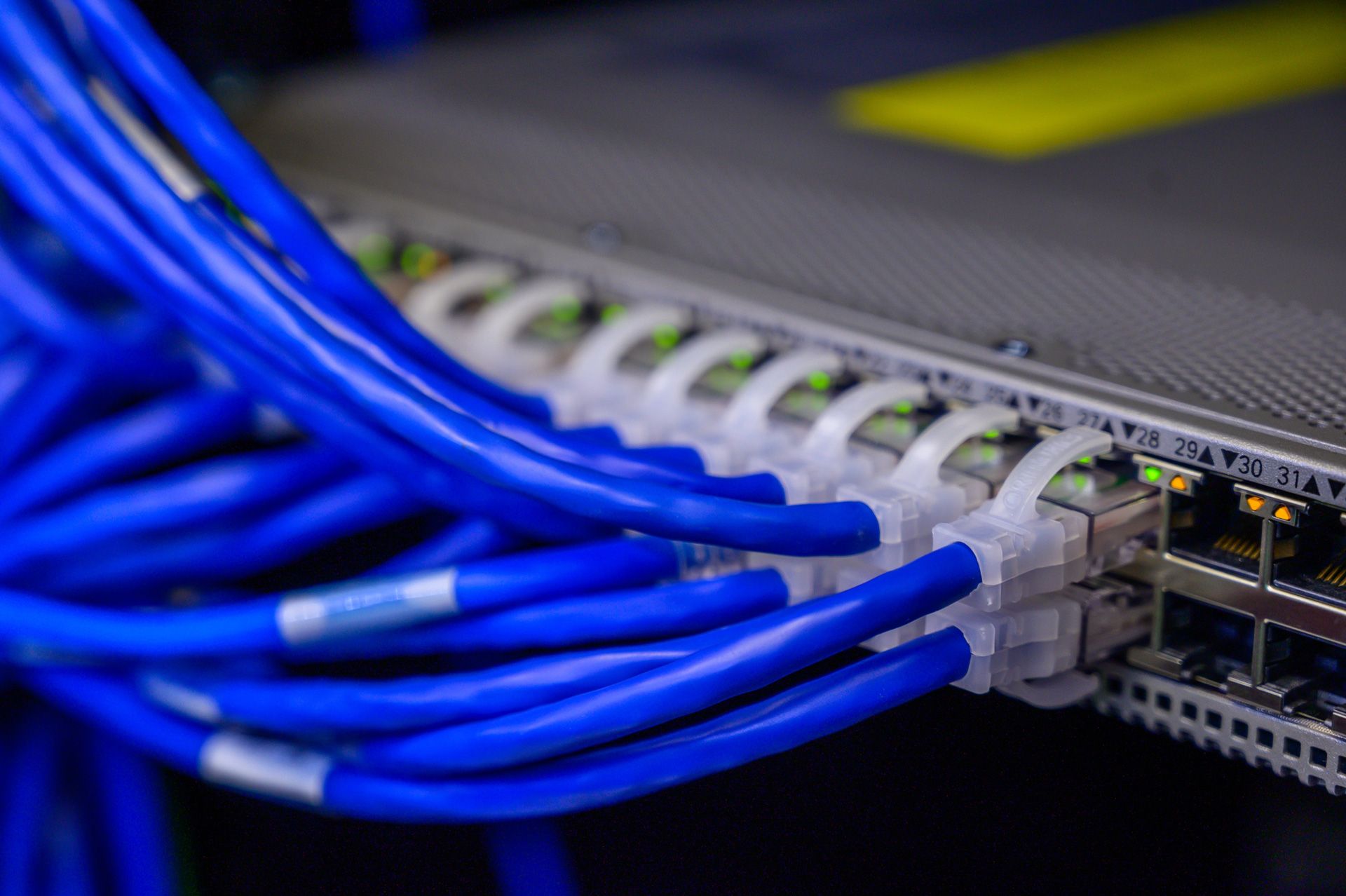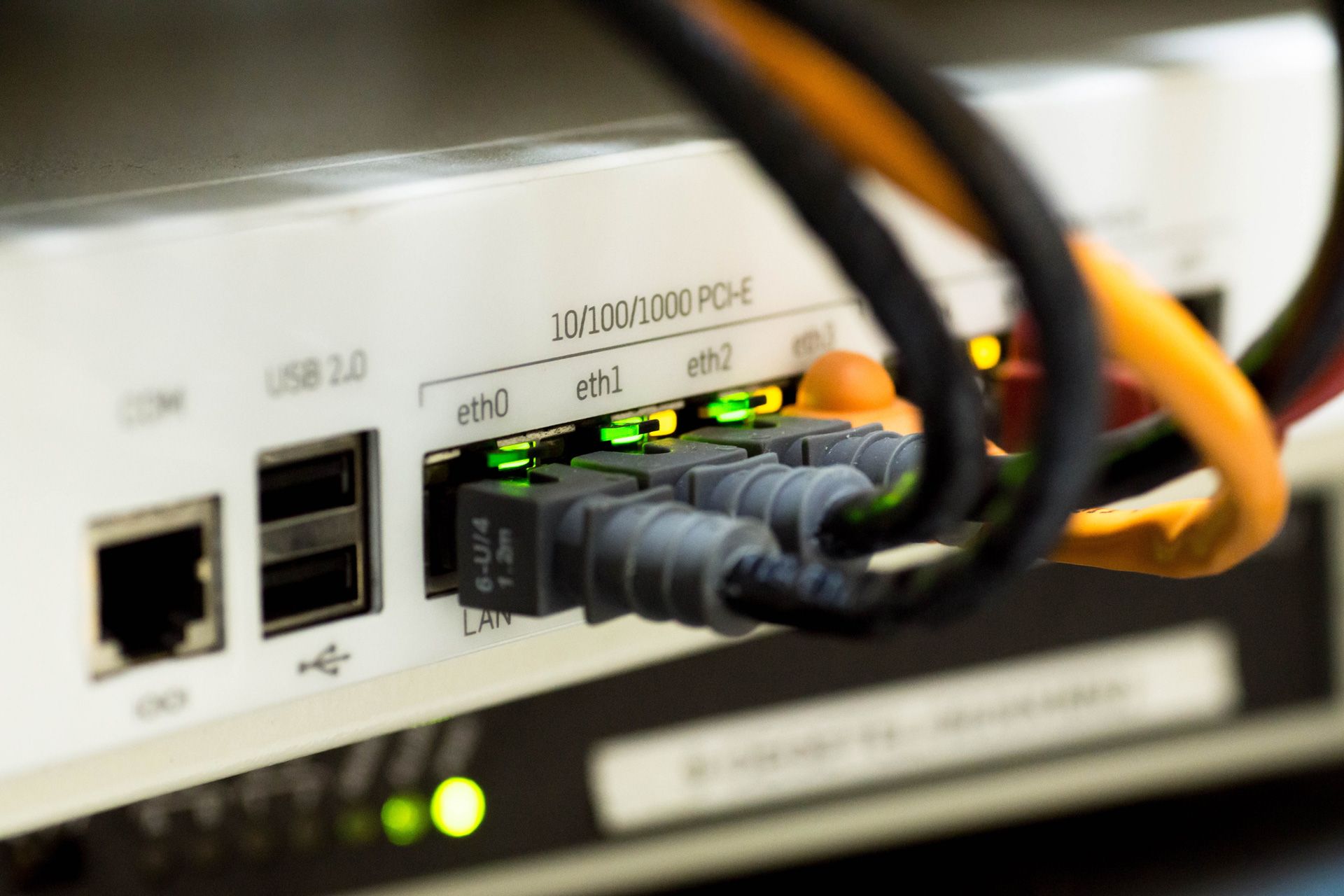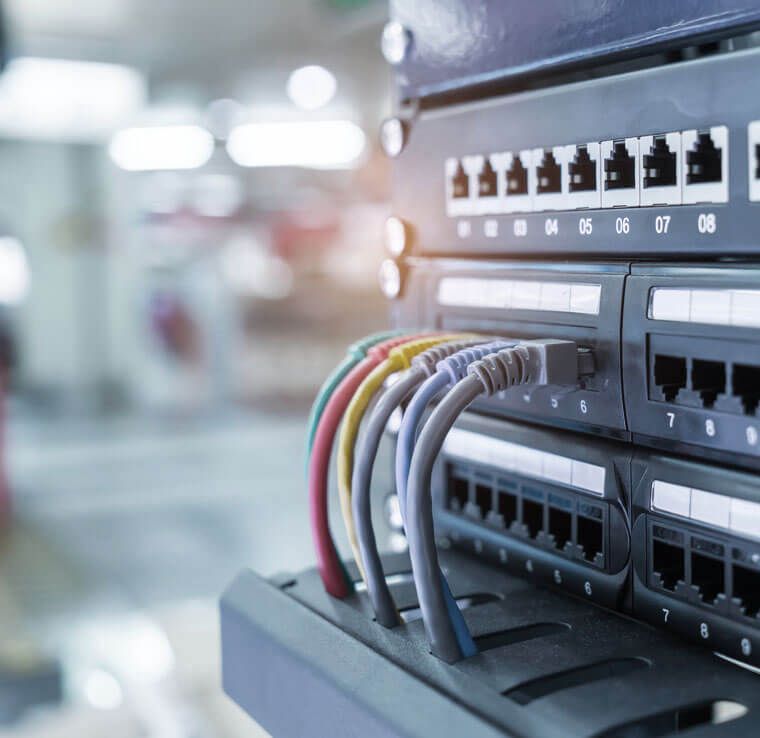The Ultimate Guide to Structured Cabling: Unlocking Your Network's Potential

Welcome to the cutting-edge world of structured cabling, the pivotal backbone that powers our digital landscapes. Selecting the perfect cabling solution is not just a tech choice; it's a strategic decision that significantly impacts your network's efficiency, reliability, and scalability.
Whether you're leaning towards the robustness of copper, the lightning-fast capabilities of fiber optic, or the unmatched adaptability of wireless technologies, each option unveils distinct advantages tailored to meet specific operational demands.
This guide is crafted to demystify the complex world of structured cabling, offering you a clear, informed path to optimizing your network. Dive into an exploration of copper, fiber optic, and wireless cabling, and discover how the right choice can elevate your connectivity to unprecedented levels. Ready to transform your network into a powerhouse of performance? Let's embark on this journey together.
Understanding Structured Cabling
Structured cabling stands as the critical infrastructure backbone for all data, voice, and video communication within a business or organization. This system isn't just a random assortment of wires and cables; it's a comprehensive framework designed for resilience, scalability, and future growth. By adhering to a set of standards that dictate how to wire a data center, office, or building, structured cabling ensures that your IT network is robust, flexible, and ready to handle the demands of today and tomorrow.
Why It Matters: In our increasingly digital world, the efficiency of your network directly influences the productivity of your operations. Whether it's facilitating smooth video conferences, ensuring rapid data transfers, or supporting your day-to-day communications, the right structured cabling system can make all the difference. It's about more than just keeping you connected; it's about keeping you ahead of the curve.
Benefits of a Structured Approach
- Reliability: Minimize downtime with a system that's robust against failures.
- Scalability: Easily add new technologies or expand your network without overhauling the existing infrastructure.
- Efficiency: A well-organized cabling system simplifies maintenance and troubleshooting, saving you time and money.
In essence, structured cabling is the foundation upon which your network operates. It's the unsung hero that supports every email sent, every webpage loaded, and every video streamed. With the right structured cabling in place, you're not just prepared for today's digital demands; you're set to evolve with the technological advances of tomorrow.
Types of Structured Cabling
Navigating through the types of structured cabling is crucial for tailoring your network to meet specific needs. Let's break down the options:
Copper Cabling: The Traditional Backbone
Copper cabling, the classic choice, has powered networks for decades. Known for its reliability and cost-effectiveness, it's a versatile option suitable for a range of applications.
Advantages
- Cost-Effectiveness: Copper cables offer an affordable solution for many networking needs, balancing performance and budget.
- Flexibility: Easy to install and modify, copper cabling supports a wide range of network demands, making it ideal for businesses looking for a reliable, budget-friendly option.
- Proven Technology: With a long history of success, copper cabling's durability and dependability are well-established.
Disadvantages
- Bandwidth Limitations: While copper cables support high-speed data transmission, they can't match the bandwidth potential of fiber optic cables.
- Distance and Interference: Signal quality degrades over long distances, and copper is susceptible to electromagnetic interference (EMI), potentially impacting data transmission.
Fiber Optic Cabling: The Speed Champion
For sheer speed and long-distance communication, fiber optic cabling is unmatched. It uses light to transmit data, offering a leap in bandwidth and reliability.
Advantages
- High Bandwidth: Fiber optic cables can handle significantly more data than copper, supporting the demands of high-speed internet, streaming, and beyond.
- Long Distance: With minimal signal loss, fiber optics are ideal for sprawling networks and long-distance connections.
- EMI Immunity: Fiber optic cables are immune to electromagnetic interference, ensuring clean, reliable data transmission even in electrically noisy environments.
Disadvantages
- Higher Initial Cost: The installation and material costs for fiber optic cabling are typically higher than those for copper.
- Fragility: Fiber optic cables are more delicate than copper and require specialized installation and handling.
Wireless Cabling: Flexibility and Mobility
Wireless technology offers an alternative to traditional cabling, providing flexibility and supporting mobile connectivity in ways that wired networks cannot.
Advantages
- Mobility: Wireless networks allow users to connect from anywhere within range, supporting a flexible and dynamic working environment.
- Ease of Installation: Setting up a wireless network can be less invasive, especially in buildings where running cables is impractical.
- Scalability: Adding new users or expanding coverage area is often simpler with wireless networks compared to extending physical cabling.
Disadvantages
- Interference: Wireless networks can be susceptible to interference from other wireless devices and structural elements, which can affect signal strength and reliability.
- Security Risks: Without proper safeguards, wireless networks can be more vulnerable to unauthorized access and data breaches.
Each cabling type offers distinct benefits and challenges, making it crucial to consider your specific needs—whether it's the cost-effectiveness and reliability of copper, the high-speed data transfer of fiber optic, or the flexibility and mobility of wireless. Understanding these options allows you to build a network that not only meets today's demands but is also prepared for future growth and technologies.
Factors to Consider When Choosing Cabling
Deciding on the best structured cabling solution requires a careful analysis of your specific needs and conditions. Here are critical considerations to guide your choice:
Bandwidth Requirements:
Evaluate the data volume your network will handle. High-definition video streaming, large-scale data transfers, and cloud computing demand the high bandwidth that fiber optic cabling offers.
Distance Considerations:
The physical layout of your network matters. Fiber optic cables excel over long distances with minimal signal loss, making them ideal for expansive networks. In contrast, copper cables are more suited for shorter distances due to signal degradation over length.
Environmental Factors:
Copper cables can be sensitive to electromagnetic interference (EMI) from machinery or electronic devices, which can disrupt data transmission. Fiber optic cables, immune to EMI, ensure cleaner signal integrity in electrically noisy environments.
Cost Implications:
Budget constraints play a significant role. Copper cabling offers a cost-effective solution for many scenarios. However, the long-term benefits and reduced maintenance of fiber optic cabling might justify its higher initial investment.
Scalability and Future-proofing:
Anticipate your network's growth. Wireless and fiber optic solutions provide superior scalability and adaptability for future expansions or technological advancements compared to copper cabling.
Conclusion
Selecting the right structured cabling is a strategic decision that impacts your network's performance, reliability, and scalability. Whether you opt for the durability and cost-effectiveness of copper, the high-speed and long-distance capabilities of fiber optic, or the flexibility and mobility of wireless, your decision should align with your specific needs and future aspirations. Assess your requirements, consider the environmental factors, and plan for growth. By making an informed choice, you ensure that your network infrastructure not only meets today’s demands but is also prepared for tomorrow's innovations.
Embarking on this journey with a clear understanding and strategic foresight will transform your network into a robust, efficient, and scalable asset. The right cabling choice is out there, ready to elevate your connectivity and unlock your network's full potential.
Ready to Elevate Your Connectivity?
Choosing the perfect structured cabling solution is a pivotal step toward optimizing your network's performance, reliability, and scalability. Whether you're upgrading an existing infrastructure or designing a new one, the expertise of a seasoned professional can make all the difference.
American Broadband Networks specializes in delivering top-tier connectivity solutions tailored to your unique needs. With a comprehensive suite of services including broadband networks, interior cabling for apartment complexes, structured cabling, fiber optics, coaxial cable installation, WiFi installation and management, and more, we're equipped to bring your connectivity to the next level. Our dedicated team excels in new construction internet projects and expanding your network's reach with additional outlets for internet and phones.
Serving the Charlotte, NC area, American Broadband Networks is your local partner in achieving seamless, high-speed connectivity that drives your operations forward. Ready to transform your network infrastructure with expert care and precision? Contact American Broadband Networks today and take the first step towards a future-proofed, high-performance network.
Elevate your connectivity with American Broadband Networks—where excellence in structured cabling meets cutting-edge technology.

Leave us your info
Sign up to our newsletter
We will get back to you as soon as possible
Please try again later
CONTACT US
11009 Astoria Dr, Charlotte, NC 28262, United States of America
(336) 210-5445
dtm3tv@gmail.com
BUSINESS HOURS
- Mon - Fri
- -
- Sat - Sun
- Closed







